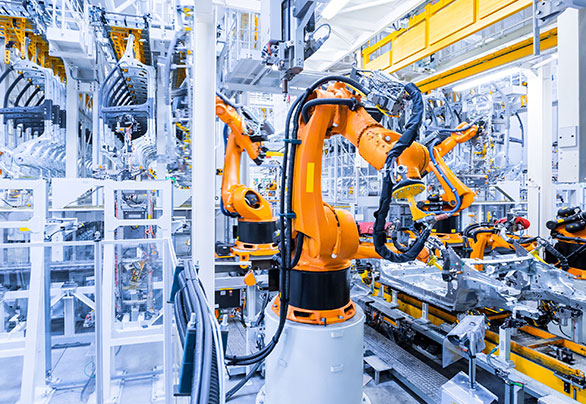


August 31, 2022
Eyes4Research
Spend a few minutes scrolling through social media, and you will quickly realize that people really love their pets. And they are spending more money than ever on their furry friends. In fact, the global pet care market grew to $241.1B by 2026. No doubt, the COVID-19 pandemic led to people either spending more on their existing pets or sparked first-time adoptions for those who attempted to blunt their lockdown loneliness and boredom. According to the National Pet Care Survey, conducted by American Pet Products Association (APPA), 70 percent of U.S. households surveyed own a pet. When people say they treat their pets like family, they mean it. Pet owners splurge on everything from food, toys, treats, and travel.
As the pet-owning audience has spent more money on their companions, they have naturally paid more attention to their health, including what food they serve them. PetoOwners are more aware of their pet’s individual dietary needs, and will pay more for food that specifically addresses those concerns, knowing what impact the right nutrition can have on their pet’s health. Some of them have even gone as far as putting their pets on customized diets based on human wellness regimens. Premium pet food brands have grown in recent years, trending towards organic, and all-natural food products.
Just like with the human loved ones in our lives, no one wants to be the victim of the sticker shock from a higher-than-expected medical bill. Pet insurance is another sector of the pet care industry that has seen significant growth. Many employers even offer it as part of their benefits package to their employees, alongside medical insurance. And as owners take their pets for their regular checkups, they are finding that many veterinarians are tapping into the wellness trend and bringing it into their own practices. Vitamins and even CBD products are also now available for dogs and cats.
Then there is the matter of clothing. While people might be divided on the idea of pets wearing clothes, pet owners who live in places where winter is an actual season have to take special precautions to make sure their pets get daily exercise while keeping them warm and safe. Whether the pets themselves enjoy playing dress-up is not known for certain, their owners have spent more and more money on clothing for them.
However much people are spending on their pets, it’s clear that they see that having a furry friend around pays dividends– for companionship, as well as for their mental and physical health.
Eyes4Research has everything you need to collect high-quality insights from pet owners. Our panels are made up of B2B, B2C, and specialty audiences ready to participate in your next research project. Learn more about our specialty panels here.

August 30, 2022
Eyes4Research
Even the most talented and seasoned marketing pros have a thing or two to learn in an industry that is evolving minute by minute. Here are 4 books to help you refine your strategy and drive results.
Product-Led SEO, by Eli Schwartz
When it comes to SEO, what catches fire for one company, might not necessarily work for another. In Product-Led SEO, Eli Schwartz defines what product-led SEO strategy is, with the aim of helping SEO managers and marketing executives develop their own best practices to increase traffic by looking beyond just keywords. Schwartz was the head of Survey Monkey’s SEO team and grew the company’s organic search from just 1 percent of overall revenue to a key driver of new global revenue. He teaches readers his philosophy of approaching SEO from a product-first perspective that can become a powerful growth engine for entrepreneurs.
The Partnership Economy, by David A. Yovanno
Collaborations are not just for social media influencers. They can be an effective way for like-minded businesses to team up to not only raise their profiles but also boost their bottom lines, and gain loyal customers. The Partnership Economy illustrates how companies can grow exponentially by tapping into various types of referral partnerships, like corporate social responsibility, affiliates rewards, sponsorships, and publishing collaborations.
RE:Think Innovation, by Carla Johnson
It’s no secret that entrepreneurs spend a great deal of their time problem-solving and looking for opportunities. And it can be easy to keep going to the same well of solutions and receive ever-diminishing returns. In Re:Think Innovation, Carla Johnson lays out a 5-step process for filling that well with new ideas that drive results. It is a process that can be extended to an entire team, empowering them to create higher quality ideas and better outcomes. While not a traditional marketing book, it never hurts to have a treasure trove of good ideas at the ready.
Everybody Writes: Your Go-to Guide to Creating Ridiculously Good Content, by Ann Handley
Content is indeed king, and when done right, it can attract customers and help your company stand out from the competition. But crafting consistently compelling content isn’t as easy as it might seem, even for talented writers. Great content needs to tell a story– about who your company is, and about what your company offers potential customers. Everybody Writes: Your Go-to Guide to Creating Ridiculously Good Content adopts the philosophy that these days, everyone is a writer, and everyone is a marketer. Author Ann Handley helps readers learn how to be concise, target their audience, and keep that audience coming back for more.
Eyes4Research has access to 10+ panels made up of B2B, B2C, and specialty audiences ready to participate in your next research project. Visit eyes4research.com to learn more about our capabilities and to request a bid.

August 22, 2022
Eyes4Research
The global food service industry is endlessly dynamic and lucrative, expecting to reach $898B by the end of 2022, When optimized, the data collected in this industry can influence everything we experience about what we eat– from how long pizza takes to arrive at our door on movie night to the array of toppings we have to choose from to put on it. The companies that leverage the processed and analyzed data are the ones who will come out on top and consistently give their customers what they want when they want it.
The restaurant business is one that is famously known to operate on razor-thin margins, a market condition that was true even before the pandemic, and it continues to slow recovery. In order to jumpstart their own recovery, restaurant owners can tap into the power of data to gather a treasure trove of information about their customers and their business operations. With that valuable information in hand, restaurants can determine which items are their best-sellers, and which ones might need a rethink. Opportunities to reduce costs, optimize operations, and refine guest experiences also come into sharper focus when this new data is implemented. Staying on top of ever-changing food trends is also an area where real-time data analysis can pay dividends.
For large fast food chains, efficiency is paramount for a streamlined process that needs to be duplicated many times over. McDonald’s uses data to manage their supply chain as well as to stay on top of what is happening in each of its 34,000 individual locations. Providing diners with a unique and personal experience is possible because of insights gained from their customer data. For example, to personalize the drive-thru process, McDonald’s began changing their digital menu board to reflect the time of the day, the weather, and which items are popular at that particular location. Customers are even able to learn how long they could expect to be waiting as they drive up to place their orders.
Whether someone is running a small corner pizza shop or is an executive at a multinational burger chain, data has earned its place as an important tool for the food service industry. In a time when attention spans are short, and food trends change in the time it takes to scroll, restaurants need to keep up with the preferences of their customers and manage operations efficiently.
Eyes4Research has access to 10+ panels made up of B2B, B2C, and specialty audiences ready to participate in your next research project. Visit www.eyes4research.com to learn more about our capabilities and to request a bid.

August 19, 2022
Eyes4Research
Automation was a driving force of the digital revolution. Companies that understand how automation can benefit consumers will find success in the ever-evolving business landscape of the 21st century.
Today, we can communicate, buy goods, sell goods, and consume information anywhere, at any time. The list of technological devices that makes our lives easier is too long to list here.
Automation was one of the driving forces behind this digital revolution. But in recent years it has taken on a life of its own and become the focus and goal of many new innovations. Many companies have already developed automation strategies and those that understand how automation can benefit consumers will find success in the ever-evolving business landscape of the 21st century.
The idea of automation has been around since the dawn of human civilization in one form or another. In its most general definition automation refers to any technology that reduces human involvement in certain processes. The term itself gained widespread use in the English language after 1947 when Henry Ford created the “automation department” at Ford Motors. In the decades since, automation has grown to be an integral part of the global economy. It will continue to play an important part of all our lives in the coming years.
Automation promises to offer benefits to companies, investors, and especially consumers, with saved labor costs, more productivity, and better quality products, ultimately making customers happy. Some companies have gotten ahead of this wave and are producing automated electronic devices, cars, and even entire stores. Their efforts will provide new experiences for the customer and can possibly elevate and move notable brands into the future. So, let’s look at how automation brought us to where we are today as well as what companies and consumers can expect from the future of automation.
Humans attempted to make certain activities less labor intensive as soon as they started making tools. Greek and Roman architects and inventors, such as Vitruvius, experimented with water and steam power. But it wasn’t until the Renaissance that automation began to truly take form. (Johannes Gutenberg changed everything with his invention of a movable type printing press in 1439 that enabled the mass production of printed books.)
It would take a few more centuries and some more innovations during the Industrial Revolution before what we think of today as automation was born. The introduction of “feedback controllers” to the manufacturing process in the 1930s is often seen as the beginning of modern automation. A feedback control system is defined as a system that maintains a set relationship of one system variable with another by comparing the functions of those variables and using the difference as a means of control. This may sound complicated, but it’s easier to visualize when one considers that feedback control is the automation that modernized most manufacturing and aircraft communications in the mid-twentieth century.
During the 1970s, automation merged with the burgeoning computer industry to create what some term the “Third Industrial Revolution”, and automation was further utilized after the 1990s to help build artificial intelligence (AI) systems and robotics.
Current automation is highly integrated with AI and robotics, including everything from automated, self-checkout counters at retail stores to self-driving vehicles. Most automation that consumers use are in customer service, including chatbots, automatic checkouts, automated phone operators, etc. Most of us are more than familiar with these forms of consumer automation, as many have been around for decades. But the new wave of automation that’s currently unfolding promises to bring some pretty big changes to the business and technology landscapes.
One sector that the automation industry has in its crosshairs is fast food, which is expected to jump into automation in the next few years. “Flippy” the burger robot may be a sign of things to come. Flippy is the name given to a $100,000 robot that cooks hamburgers at the Caliburger fast food restaurant in Pasadena, California. Although the cost of a Flippy robot is currently prohibitive for many store owners, as prices decrease expect to see more Flippies making your burger and fries.
Retail is currently leading the automation wave, and if you live in a major city and order products from Amazon chances are you’ve already experienced it. Amazon currently uses delivery drones to bring customers packages in several metropolitan areas. Amazon’s streaming service, Amazon Prime, uses AI to suggest shows and TV shows for consumers (as do Netflix and Hulu). Amazon is currently attempting to jump in the market of fully automated stores. Amazon Go is the brand of the company’s fully automated stores and although they’ve yet to make much of an impact in the US, the concept has caught on in other countries.
China has been at the vanguard of retail automation with its chain of fully automated convenience stores, BingoBox. BingoBox has been quite successful in China, so its owners are planning on expanding to other Asian countries and then possibly beyond. It doesn’t take long to think of a number of other examples of automation in our daily lives. But what does the future of automation hold for businesses and consumers?
There’s little doubt that the Age of Automation is upon us, but the numbers show that in the near future industries will be disproportionately affected by the transition. For example, one study shows that only about 5% of current occupations could be fully automated by contemporary technology, but that about 30% of activities in 60% of all occupations can be automated. Put simply, most people don’t have to worry about getting replaced by a robot. At the same time, there’s no doubt that automation is poised to cause massive disruption across several industries. How positive that disruption is a matter of perspective.
The potential for positive disruption for companies and brands that join the Automation Revolution is immense. The first benefit is that companies will save on labor costs. Although Flippy and other similar robots may cost a fortune, they will likely save companies in the long run and their prices will decrease as they are adopted by more companies. You don’t need to provide health insurance for robots, and robots never take vacations!
Experts also believe that automation and AI will be far more productive in fields where repetition is common. Automated robots and AI will be able to catch errors that humans miss and work without rest. Some believe that automation’s ability to catch errors will allow brands to present a consistent, personalized message that will ultimately better connect consumers to brands. Experts have also argued that automation has the ability to reverse the general decline in productivity across many sectors. It’s predicted that the productivity growth of automation and AI will reach 2% annually in the next decade with 60% of the growth in the digital sector.
Certain companies and brands will definitely benefit from the automation disruption if they know what they’re doing, but how will the average consumer fare?
The average consumer stands to benefit in a number of ways from automation and some studies show that they are quite receptive to the change. A 2019 study by Capgemini showed that 69% of the respondents in one survey said they prefer retailers that use automation because it reduces food waste. This finding follows the eco-friendly trend that is popular today among many consumers and will likely continue to influence automation.
The more tangible, direct benefits that consumers gain from automation are plentiful. So far, automation has proven the ability to deliver products quicker with lower prices and higher quality. Automation has also led to better customer service. As many companies have automated their customer service, it has created more efficient and accurate service. Other companies that have automated production have been able to place more qualified, higher-paid humans into customer service positions.
The day of the robots is upon us, whether we like it or not. But it isn’t the end of the world. Companies, brands, and consumers all stand to gain numerous benefits from the ongoing automation wave. Companies will pay more initially to automate. Eventually, the process will help drive down costs and prices. Automation will also help brands connect better with their consumers through attention to detail and quality, thereby building stronger brand identity in the process.
Most importantly, the consumer stands to gain the most from automation, through quicker delivery, better quality, and lower prices.